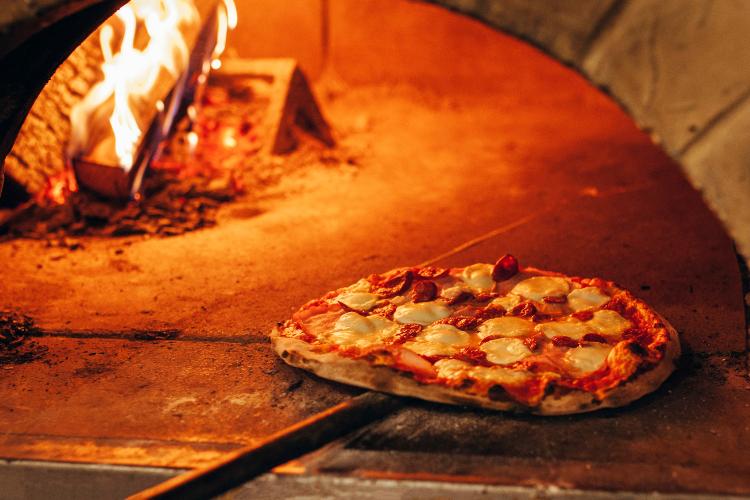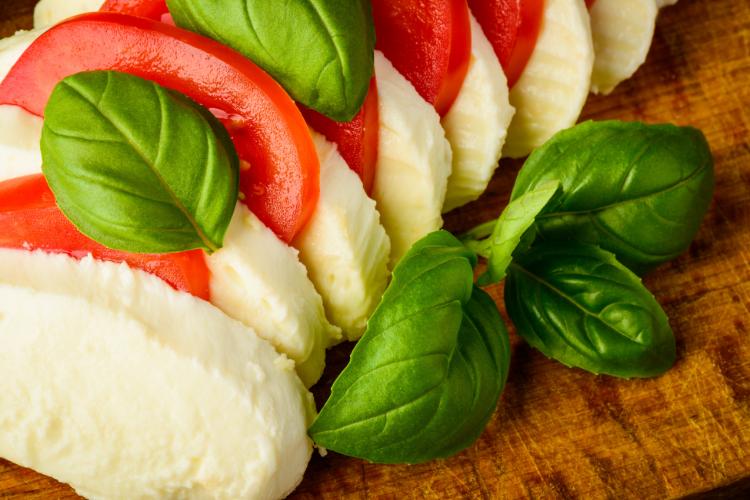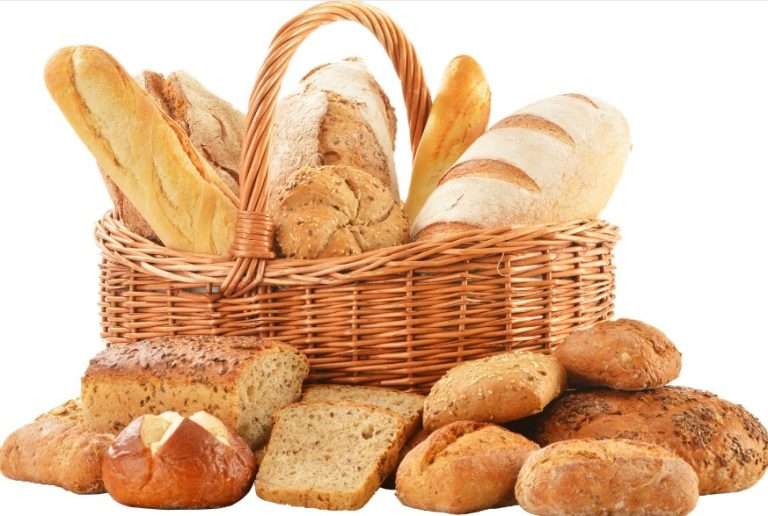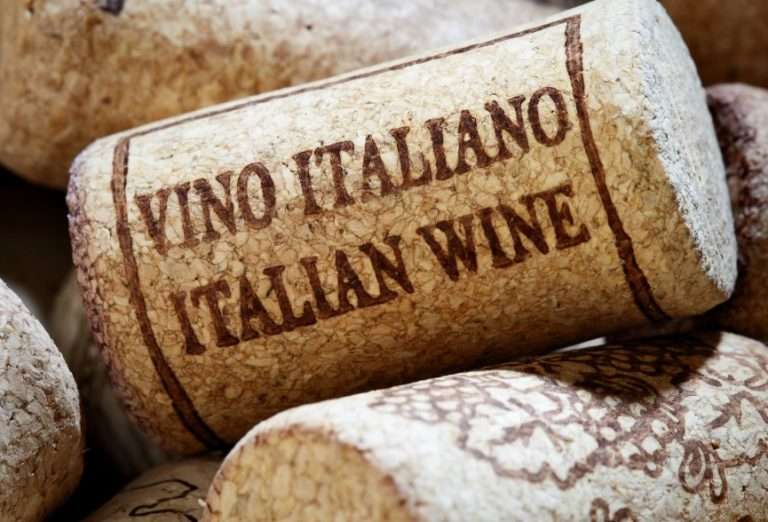100 Most Interesting Italian Food Facts You’ll Love
Are you looking to learn the most interesting and fun Italian food facts? You’re in the right place!
Being of Italian descent, I’ve delved deep into Italy food facts, uncovering truths and tales about our culinary treasures. From the winding streets of Naples to the bustling markets of Florence, I’ve savored Italy’s diverse flavors and collected the most interesting facts about Italian food along the way.
Each fact in this article has been handpicked and verified for its authenticity. So, all you need to do is indulge in this gastronomic journey into Italian food culture and savor each revelation!
Facts About Italian Pasta

1. The Authentic Pasta Texture: Al Dente
The preferred texture for pasta in Italian cuisine is ‘al dente,’ which may seem slightly firm or undercooked to some, but it ensures a bite that’s just right in Italy.
2. A Myriad of Pasta Shapes to Explore
Italy is home to over 600 different pasta shapes. From the slender threads of spaghetti to chunky penne and delicate spirali, each shape is designed to hold onto sauces in its unique way.
3. Delight in Cacio e Pepe’s Creamy Goodness
Bypass the known fettuccine alfredo and indulge in Italy’s cacio e pepe, a delectable mix of cheese and pepper, oozing simplicity and taste.
4. The Legend of the World’s Rarest Pasta: Su Filindeu
Venture to Sardinia to discover Su Filindeu, or ‘the threads of God.’ This rare pasta, crafted by only a handful, stands as a treasured delicacy, gracing tables only a few times a year.
5. Dissecting Pasta’s Historical Origins
While many associate pasta exclusively with Italy food culture, its roots might be traced back to Ancient Greece or China, long before it claimed its iconic status in Italian culture.
Related Reading: 10 Best Italian Cookware Brands: Italy’s Kitchen Gems
6. Italians’ Undying Love for Pasta
One of the interesting facts about authentic Italian food is that the average Italian enjoys 60 pounds of pasta annually, outdoing the typical American consumption by three times.
7. The Italian Etiquette: Forks Only for Pasta
When devouring pasta in Italy, forks are the utensil of choice. The idea of using spoons doesn’t cross the traditional Italian diner’s mind.
8. Cheese with Pasta, but Not Seafood
Cheese adorns many Italian pasta dishes, but true to Italian tradition, you won’t find it gracing seafood pasta. Instead, each flavor stands out on its own.
9. Debunking Spaghetti and Meatballs and Chicken Parmesan
Anticipating spaghetti and meatballs or chicken parmesan in Italy? Think again. While the former is an American-Italian creation, the latter is outshined by its original counterpart, eggplant parmesan.
If you’re curious about more authentic Italian cuisine and keen to expand your Italian vocabulary, discover how to say eggplant in Italian.
10. Serving Pasta the Italian Way: Portion Control
Italians are passionate about pasta but are equally mindful of their portions. Their tradition emphasizes balance, ensuring enjoyment without overindulgence.
Suggested Reading: How to Say Eat in Italian: Your Guide to Mangiare
11. Grasping Pasta’s Basic Composition
While dry pasta is a blend of durum wheat semolina flour and water, fresh pasta introduces eggs into the mix, lending it a soft, irresistible texture.
12. Dissecting the Marco Polo Pasta Myth
Though popular lore credits Marco Polo with bringing pasta to Italy after his 13th-century China trip, evidence suggests Italians enjoyed pasta even a century before his travels.
13. The Enigmatic Fettuccine Alfredo’s Origins
While many Italian chefs scratch their heads over Fettuccine Alfredo, its beginnings lead back to New York in the 1970s. It evolved from the simpler “pasta bianco,” a fusion of pasta, butter, and parmesan.
14. The Fairytale Behind Tagliatelle Pasta
Legend speaks of chef Maestro Zafirano creating tagliatelle pasta in 1487, inspired by Lucrezia Borgia’s golden tresses for her wedding to the Duke of Ferrara.
15. Garlic Bread: The Unexpected Myth
You should recalibrate if garlic bread tops your Italian culinary list. In Italy, plain bread is the chosen side, allowing main dish flavors to be the stars.
Recommended Reading: Say Delicious in Italian: Best Phrases for Foodies
Facts About Italian Pizza

16. Celebrating Simplicity in Pizza
Italian pizzas are defined by their thin crusts and a focus on fresh ingredients. The sauce sidesteps the sweetness of American variants, embracing authentic, hearty flavors.
17. The Neapolitan Pizza: An Emblem of Tradition
Originating as a quick bite for Naples’ laborers, this iconic pizza has become a global culinary symbol.
18. The “Pepperoni” Confusion: Spice vs. Vegetable
Ordering a pepperoni pizza in Italy might surprise you with bell peppers. For the familiar spicy salami, seek ‘pizza con salame piccante’ or the zesty ‘pizza alla diavola.’
19. The Royal Touch: Pizza Margherita’s Origin
Inspired by Queen Margherita’s visit to Naples, this tricolored pizza, flaunting mozzarella, basil, and tomatoes, pays tribute to the Italian flag’s hues.
How well do you know Italian pizza? Take this Italian pizza quiz to find out.
20. Pizza’s Individualistic Approach
In Italy, pizza isn’t about sharing. It’s a personal experience where each order is tailored to the diner’s palate.
21. The Slice vs. The Pie: Timing is Key
For a noontime pizza craving, head to a cafe for pizza al taglio or a pizzeria for a whole pie. Yet, evening heralds the best time for a round pizza indulgence.
22. The Art of Crafting Neapolitan Pizza
Neapolitan pizza-making is more than just culinary skills—it’s an art form so revered that UNESCO labeled it an ‘Intangible Cultural Heritage.’
23. Pre-Slicing? Not Here
One of the fun facts about Italian food is that, in Italy, your pizza arrives at the table untouched, inviting you to use a fork and knife to cut your own slices.
24. U.S. Welcomes Pizza Before Its Italian Rise
Interestingly, even as Naples deemed pizza a commoner’s food, Italian immigrants in the U.S. were laying the foundations for its vast popularity.
Suggested Reading: Italian Pizza vs American Pizza: Key Differences Unveiled
25. Naples’ Hidden Delight: Fried Pizza
Beyond the baked marvels from wood-fired ovens, Naples surprises with a specialty: scrumptious fried pizzas.
26. Antica Pizzeria Port’Alba: The Pioneering Pizzeria
Heralded as the world’s initial pizzeria, Antica Pizzeria Port’Alba, established in 1830 in Naples, remains a sought-after haunt for pizza enthusiasts.
27. Tales of Toppings: Marinara’s Story
Marinara pizza, resplendent with tomato, oregano, and garlic, owes its name to “la marinara,” believed to be a fisherman’s Neapolitan wife who crafted this delicacy for her beloved.
28. The Deep Historical Roots of Pizza
Dating back to ancient civilizations like the Egyptians, Greeks, and Romans, pizza’s early versions were basic flatbreads enjoyed by many.
29. Cutting Through Pizza Myths: Margherita’s Contested Origins
While many credit Pizza Margherita’s naming to one of Italy’s last queens, the true backstory remains wrapped in enigma and debate.
Facts About a Typical Italian Meal

30. Initiating with Primo
Italian meals typically commence with a pasta dish, introducing the culinary journey ahead.
31. Secondo: The Meal’s Pinnacle
The secondo is at the meal’s core, predominantly spotlighting meat or fish as its star.
32. Caesar Salad’s Cross-Border Birth
Though Italian chef Caesar Cardini is credited with the Caesar salad’s creation, its origin isn’t Italy but Tijuana, Mexico.
33. Craft Your Italian Meal
Italian dining allows you to choose both primo and secondo. Restaurant patrons can curate their culinary experience, picking from any menu section. For those inclined towards a plant-based diet, there are also Italian vegan cookbooks available that will teach you how to create the perfect plant-based Italian meal.
34. Il Pranzo: Midday Culinary Retreat
Many Italians take a midday pause, heading home around 1:00 p.m. to indulge in an elaborate lunch reminiscent of Spain’s siesta.
35. La Cena: A Late Culinary Encounter
With dinner typically starting near 8:30 p.m., Italians first partake in a cherished pre-dining tradition – the aperitivo.
36. Celebrating Evening’s Approach: Aperitivo
Beyond just happy hour, an aperitivo in Italy offers a drink and an array of snacks, from simple nuts to an extensive buffet.
Related Reading: Italian Happy Hour: Your Guide to Aperitivo Culture
37. Bread’s Culinary Dance
Rather than a starter, bread traditionally accompanies meals, most notably to “fare la scarpetta” and ensure no sauce remains on the plate.
38. Risotto’s Artful Craft
Originating in Northern Italy, risotto is a creamy rice Italian dish made from Arborio rice. The secret? Constant stirring and gradual addition of broth result in its signature luxurious texture.
39. A European Take on Water
One of the interesting facts about Italian cuisine is that water is usually served without ice and at room temperature in Italy. If you prefer ice, make sure to mention it.
40. The Meal’s Opening Chorus: ‘Buon Appetito’
Whether in a quaint Italian home or a vibrant restaurant, meals are traditionally initiated by wishing everyone “buon appetito.”
41. Italian Breakfast (Colazione): Italy’s Morning Elixir
Embracing minimalism, Italians often start their day with ‘colazione,’ a revitalizing coffee paired with a treat like ‘brioche’ or ‘cornetto.’
Related Reading: 27 Best Italian Breakfast Foods & Drinks to Try
42. Navigating Italy’s Culinary Courses
Especially on special occasions, Italian meals are a grand affair with multiple courses, from appetizers to the sweet finale.
43. Italian Culinary Acts: From Antipasti to Dolce
The meal unfolds with antipasti (appetizers), followed by a primo (pasta or risotto), and then the grand secondo (protein dish) complemented by ‘contorni’ (sides). The culinary journey concludes with ‘dolce’ (dessert), typically accompanied by a digestif coffee.
Facts About Italy’s Coffee Traditions

44. Venice: Ground Zero for Italian Coffee
Venice opened the doors to Italy’s coffee culture in 1683, boasting its first coffee house. And for those keen on savoring Italian coffee, the Moka pot – an Italian marvel – is a must-have!
45. St. Mark’s Square: Coffee’s Italian Genesis
In 1683, St. Mark’s Square in Venice hosted Italy’s pioneering coffee establishment.
Recommended Reading: Best Italian Espresso Machines: Top 20 Brands
46. Pre-Coffee Hydration Ritual
Receiving water with your coffee? Tradition dictates you sip the water first to prepare your palate for the impending coffee delight.
47. Cappuccino: A Morning Elixir
Post-11 a.m. cappuccinos in Italy might earn you puzzled glances. This creamy coffee is typically relished during breakfast, making way for espressos as the day progresses.
48. Espresso: Italy’s Quick Coffee Fix
Italian coffee breaks contrast sharply with the leisurely French café sit-downs or the American work-from-café culture. Here, a quick espresso shot at the bar is the norm.
49. Coffee Bars: Italy’s Day-to-Night Transition
Coffee Bars in Italy offer more than evening drinks. They start their day with coffee, evolving their offerings with the sun’s trajectory.
50. Latte Lost in Lexicon
Yearning for a coffee-milk blend? Specify ‘caffe latte.’ Asking just for a ‘latte’ might earn you a plain glass of milk.
Suggested Reading: 14 Best Italian Coffee Brands: Taste Italy’s Finest
51. Caffe’ Con Panna’: The Whipped Delight
Ordering ‘caffe con panna’ will land you an espresso and a generous whipped cream dollop.
52. Coffee To-Go: An Emerging Phenomenon
While traditional Italian coffee bars may have yet to embrace the ‘to-go’ culture initially, adaptability has led to innovative solutions like cappuccinos in sealed plastic cups.
53. Italian Coffee: A Petite Powerhouse
Though touristy areas may offer grander servings, authentic Italian coffees are compact in size. Some caffeine enthusiasts might even opt for a double dose.
54. The Coffee Clock of Italy
Italian mornings hum with the tunes of cappuccinos and caffè lattes, while afternoons transition to the bold notes of espresso. This is based on the belief that milky brews post-noon can disrupt digestion.
55. Moka: Italy’s Homely Coffee Companion
For an authentic at-home Italian coffee experience, locals vouch for the Italian Moka pot, a brilliant invention by Alfonso Bialetti in 1933.
Facts About Italian Cheese

56. Italy: The Ultimate Cheese Haven
With over 450 unique varieties of ‘formaggi,’ Italy surpasses cheese-rich France’s cheese offerings.
57. Parmigiano Reggiano: Italy’s Crown Jewel
Dubbed the “King of Cheeses,” Parmigiano Reggiano is an Italian favorite, adorning numerous culinary creations.
58. Grana Padano: A Time-Honored Tradition
Originating from Northern Italy, a hard cheese, Grana Padano carries a legacy spanning a millennium, crafted from a treasured ancient recipe.
59. Authentic Mozzarella: Buffalo’s Gift
While many might assume otherwise, the genuine stretchy mozzarella adorning pizzas originates from buffalo milk, distinguishing it from ordinary cow’s milk.
60. Pecorino: Italy’s Sheep Cheese Gem
A hard and rich cheese, Pecorino is crafted from sheep’s milk. It boasts a strong presence across Italy, notably in regions like Lazio, Tuscany, and Sardinia.
61. Gorgonzola: Italy’s Blue Marvel
Tracing its roots to the town of Gorgonzola near Milan, this creamy blue cheese boasts a pungent aroma and rich, veined texture. Often enjoyed with fruits, wines, and bread, Gorgonzola stands as a testament to Italy’s diverse cheese palette.
62. Taleggio: A Cheese with Character
Hailing from the Lombardy region, Taleggio is one of Italy’s oldest soft cheeses. With a robust and aromatic scent but surprisingly mild flavor, it’s perfect for melting into risottos or enjoying with crusty bread.
Facts About Italian Condiments and Sauces

63. Italy’s Liquid Gold: Olive Oil
Olive oil, a cornerstone of Italian culinary arts, may not shimmer in gold but remains an invaluable ingredient in the country’s dishes.
64. Diversity in Italy’s Olive Oils
From region to region in Italy, olive oils present an array of colors and flavors shaped by the unique climates and specific olive cultivars.
Recommended Reading: 14 Best Italian Olive Oil Brands to Buy
65. Italy’s Olive Oil Tasting Tours
Alongside the famed wine and food tours, Italy delights visitors with many olive oil tasting tours, showcasing its regional flavor nuances.
66. Tomato Sauce: A Gift from the Aztecs
Although now quintessential to Italian cooking, tomato sauce originates from the Aztecs. Its distinct Italian twist emerges from the addition of olive oil and garlic.
67. Balsamic Vinegar: Modena’s Precious Elixir
Celebrated as the “Italian Black Gold,” balsamic vinegar originates from Modena, cementing its status as a prized Italian condiment.
Facts About Italian Desserts

68. Gelato’s Unique Creaminess
Unlike traditional ice cream, gelato contains more milk and fewer eggs. Its slower churning method delivers a lusciously dense and creamy texture.
69. Florence: The Cradle of Gelato
Every corner of Italy cherishes gelato, but its roots trace back to Florence. A city visit is only complete with indulging in its original dessert!
70. Italy’s Gelato Flavor Spectrum
Italy’s gelato landscape is vast and varied from chocolate to cream, fruit to nut. Whether you’re a fan of classic pistachio or zesty lemon, there’s an Italian gelato flavor to tantalize every palate.
71. Biscotti’s Time-Honored Companion
Historically, biscotti found its match in vin santo, a dessert wine. Today, many favor dipping this crunchy delight into a comforting cup of coffee.
72. Tiramisu: Italy’s Energizing Dessert
With a name that means ‘pick me up,’ Tiramisu does just that! Despite its global fame, Tiramisu is a newer entrant in Italy’s dessert scene, having made its mark in the 1970s. Originating from Treviso, this dessert layers savoiardi biscuits with creamy mascarpone to create a joyous lift.
73. Cannoli: A Sicilian Delicacy
An emblem of Sicilian culinary artistry, the cannolo boasts a crisp shell enveloping a creamy ricotta heart. While a single treat is termed ‘cannolo,’ in the plural, we lovingly call them ‘cannoli.’
Related Reading: 10 Delicious Italian Desserts that will make your taste buds explode with joy.
74. Panettone: The Festive Bread
During the Christmas season, no Italian table is complete without Panettone. This sweet bread loaf, dotted with candied fruits and raisins, originates from Milan and has since become synonymous with Italian holiday celebrations.
Facts About Italian Wines, Spirits, and Toasting Rituals

75. Italy: A Wine Powerhouse
Italy doesn’t just produce wine; it dominates, being the world’s biggest wine producer. It’s a national passion, with its citizens delighting in 35 to 55 liters annually.
76. Lunch: A Wine Lover’s Retreat
Across Italy, indulging in wine during long lunches is more than a mere pastime—it’s tradition. This practice allows for an unhurried savoring of wine, enhancing the meal’s experience.
77. Prosecco: Italy’s Sparkling Gem
Originating from Italy, Prosecco offers a sparkling and affordable alternative to the renowned French champagne, making bubbles accessible to all.
Related Reading: Best Wines for Italian Food: Your Wine Pairing Guide
78. Italy’s Grape Diversity
Sustaining its wine leadership, Italy impressively parades over 2000 unique grape varieties, adding depth and range to its wine offerings.
79. The Art of Italian Toasts
Toasting in Italy isn’t simply about clinking glasses. It’s a ritual where avoiding crossing glasses and toasting with water is essential to dodge bad luck. And remember, direct eye contact during a toast isn’t just polite; it’s customary, cementing a connection between drinkers.
80. Limoncello: The Sunny Liqueur
From the radiant Amalfi Coast comes Limoncello, a lemon-infused Italian liqueur. It’s traditionally served chilled as an after-dinner digestivo, capturing the essence of sun-kissed Italian summers.
81. Amaro Tradition in Italy: An Herbal Legacy
Originating from Italy, amaro is a blend of various Italian herbs and spices, creating a unique bitter flavor. Though opinions on its taste vary, it remains a revered digestive and key cocktail component in the nation.
Facts About Italy’s Culinary Regions

82. Italy’s Olive Oil Hub: Southern Italy
A melody of the Mediterranean, Southern Italy dazzles with seafood-heavy dishes and dominates the country’s olive oil scene.
83. Northern Italy’s Culinary Riches
Expect delights like Parmigiano Reggiano, ham, and the celebrated balsamic vinegar in the cooler Northern regions. Fresh pasta here is more than just food – it’s a legacy.
84. Pasta Parade in Lombardia & Emilia-Romagna
Stuffed pasta like ravioli originates in the North, especially in Lombardia and Emilia-Romagna. Different regions add their twist, like Brescia’s iconic tortellini and casoncelli.
85. Tuscan Comforts
With its rustic charm, Tuscany offers a bounty of grains, legumes, and pulses. The ‘ribollita’ soup is a soul-soothing favorite among its many treasures.
Suggested Reading: Is Siena Worth Visiting? A Complete Traveler’s Guide
86. Sicilian Culinary Wonders
More than just desserts, Sicily amazes with its seafood-infused pasta. Often deemed the heart of Italian food, Sicily is a gastronomic dream.
87. Pesto’s Birthplace: Liguria
The aromatic blend of basil, pine nuts, and parmesan known as pesto calls Liguria home, a region famed for the stunning Italian Riviera.
88. The Truffle Triumph
Truffles aren’t just an ingredient in regions like Piedmont, Tuscany, and Le Marche; they’re a celebration, gracing pasta and risotto dishes with their unmistakable aroma.
Suggested Reading: Is Turin Worth Visiting? A Traveler’s Guide
89. Beyond the Pizza: Naples and Neighbors
Naples is synonymous with pizza, but delve deeper. Explore flavors from the Amalfi Coast, Isle of Capri, and more – think ‘spaghetti alle vongole’ and the iconic Caprese salad.
90. New Year, New Flavors
As the New Year dawns, Italians indulge in foods symbolizing prosperity: pork sausage, lentils, grapes, and a mix of nuts and dried fruits.
91. Venice’s ‘Cicchetti’ Charm
In Venice, ‘cicchetti’ are more than snacks – they’re a culinary institution. Paired with regional wines, they offer a taste of Venetian life in each bite.
92. Sardinian Sea Delights
Sardinia, an island gem, boasts a unique culinary scene. Dive into seafood dishes like ‘bottarga’ and savor the rich, crispy ‘pane carasau’, a bread that tells tales of ancient traditions.
93. Umbria’s Landlocked Luxuries
Despite being one of Italy’s few landlocked regions, Umbria surprises with its rich flavors. Strangozzi (or Stringozzi) pasta and truffle-infused dishes reign, all washed down with the region’s esteemed wines.
94. Calabria’s Fiery Affair
Known for its ‘nduja’, a spicy spreadable sausage, Calabria is Italy’s spicy heart. Its hot peppers flavor many dishes, offering a culinary experience that ignites the senses.
Suggested Reading: Richest Cities in Italy: Top 10 Wealthiest Places to Live
Facts About Italian Food Traditions and Celebrations

95. Italy’s Seasonal Palate
Italians passionately sync with the seasons. As spring flourishes, artichokes find favor on their plates. Come winter and autumn, chestnuts warm their hearths and hearts.
96. Sagra: Italy’s Food Festivals
Across Italy, ‘sagra’ – vibrant food festivals – unite communities. Autumn especially sees a surge in these celebrations. Piedmont’s Alba White Truffle Festival is a standout among them.
97. Toasting Traditions & Legends
Deep in Italian customs lie fascinating superstitions. One such belief: always maintain eye contact when clinking glasses. Overlook this, and you might just invite seven years of bad luck!
98. La Vigilia: A Feast Before the Feast
On Christmas Eve, many Italian families celebrate “La Vigilia” with a lavish seafood meal, abstaining from meat to anticipate Christmas Day. This tradition, also known as the Feast of the Seven Fishes, showcases Italy’s coastal bounty.
Related Reading: 60 Facts About Christmas in Italy: Fun Holiday Traditions
99. Easter Sweetness: La Colomba di Pasqua
Come Easter, Italians delight in ‘La Colomba di Pasqua’, a dove-shaped cake symbolizing peace. Sweet, airy, and adorned with sugar and almonds, it’s a bite of celebration and hope.
100. Carnevale Culinary Celebrations
As February’s Carnevale festivities envelop Italy, Venice shines particularly bright in its carnival celebrations. The nation indulges in sweet delights, from ‘chiacchiere’ – crispy pastries – to ‘castagnole’ – little fried dough balls, creating a sugary tapestry of tradition.
Before You Go…
Considering Retirement in Italy? Explore the 40 best places to retire in Italy through the eyes of a local. Having traversed the picturesque landscapes and backed by thorough research, this 2024 guide ensures you’re introduced to Italy’s crème de la crème of retirement spots.







